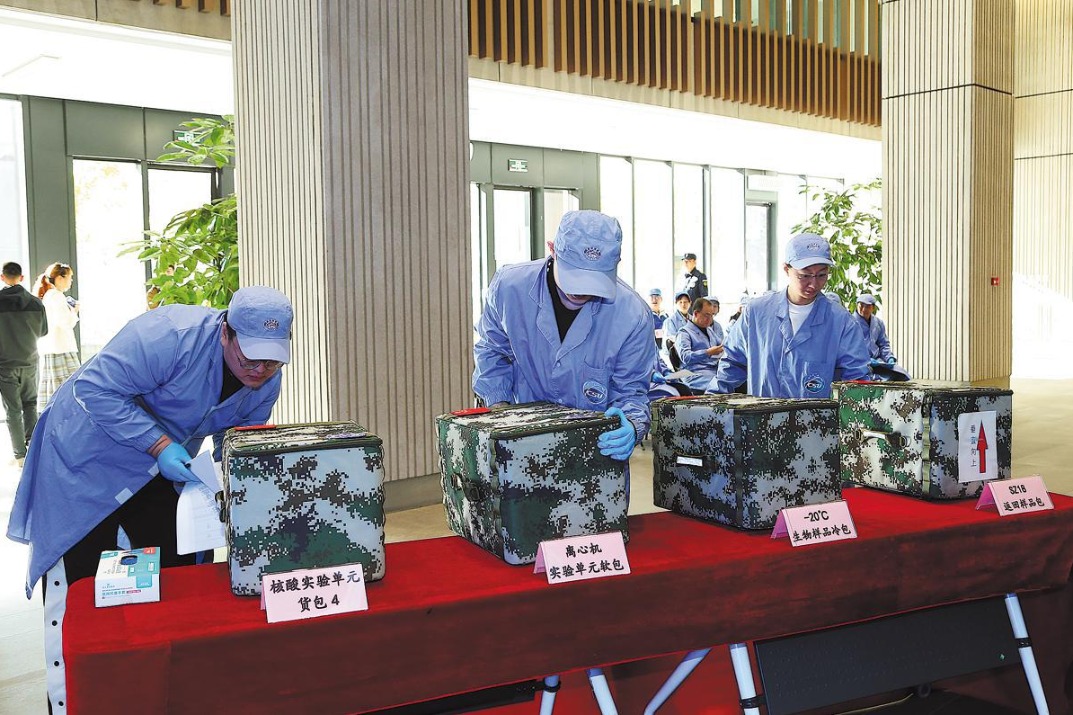A skill that ignites the imagination


01
Shang (c. 16th century-11th century BC) and Zhou (c.11th century-256 BC) dynasties and proto-porcelain
The period saw the birth of "proto-porcelain", a product in the transition from pottery to "mature" ones, known to people today as porcelain.
Proto-porcelain assumed a grayish-green in color. The National Museum of China has a green-glazed jar with net patterns, dated to the Western Zhou Dynasty (c.11th century-771 BC). Studies of this object have revealed two major evolutions of the proto-porcelain at the time: an increasing production of daily-used vessels; more objects molded in the shapes of ritual bronzeware.
02
Late Eastern Han Dynasty (25-220)and mature porcelain
Regions along the Cao'e River in Shangyu, in today's Zhejiang province, became a center for making green-glazed proto-porcelain during the third century BC.The production scaled up, and the wares used for rituals were transported elsewhere, even deeper in the country, to help spread the practice.
Finally, in the late Eastern Han Dynasty, the "mature" porcelain, exhibiting a celadon glaze, were successfully produced at major kilns in Shangyu, such as the Xiaoxiantan kiln, of which the relic location was discovered in 1974 and is now deemed a heritage site.
03
Tang Dynasty (613-907) and ceramics export trade
Tang Dynasty is synonymous with prosperity, openness and diversity, and one vivid example of its power and extensive influence is the rise of several major ports, including Guangzhou (Guangdong province). Yangzhou (Jiangsu province) and Mingzhou (today's Ningbo of Zhejiang province).These benefited from the booming international trade on the Maritime Silk Road. Quality ceramics from various kilns across the country were a popular export. Fine examples of representative export types can be found in the collection of National Museum of China, such as the world-renowned sancai (three-color) jars and vases. Celadons from the Yue kiln sites across Zhejiang were also well-received.
04
Song Dynasty (960-1279) and the "five kilns"
The eruption of art products is a Song Dynasty hallmark. A lifestyle nurtured by painting, calligraphy, porcelain and other works of intricate crafts was prompted by emperors, aristocrats and intellectuals to demonstrate extraordinary status and tastes.
Among these objects of culture were wares from the prominent "five kilns" — Ru, Guan, Ge, Ding and Jun.
Wares of the five great kilns are monochromatic basically, sometimes with slightly impressed patterns, which transmit serenity, grace and subtlety. Ru ware is often highly regarded as the foremost of the five as its distinctive tianqing colored glaze presents a unique classic temperament.
05
Yuan Dynasty (1271-1368) and the cobalt-blue qinghua ware
The Yuan qinghua porcelain features varieties of patterns painted in cobalt-blue pigment on a white ground. The popularity of qinghua ware diversified the trend of ceramics at the time — before that, monochromatic porcelain had been dominant.
Yuan qinghua objects were predominantly fired at kilns in Jingdezhen, the production hub in Jiangxi province. The sizes of these objects were bigger than those of previous times, and their shapes mainly included the jar, the plum vase and the elevated-foot cup, showing an infusion of the aesthetic favors and lifestyles of the nomadic tribes, as the Mongols seized power and established a monarchy.
06
Ming (1368-1644) and Qing (1644-1911) dynasties and multicolored porcelain
The multicolored porcelain production flourished in the Ming and Qing dynasties. The milky, semitranslucent surface became a stage on which a diversity of beautiful colors and motifs were presented to exhibit combinations beyond imagination.
One highly prized kind of polychromatic porcelain is the doucai ware of which the technique achieved perfection in the years of Chenghua, the reign title of Ming emperor Zhu Jianshen.
Artisans used cobalt-blue pigment to create delimitations of the patterns — flowers, birds and human figures — applied a thin layer of glossy glaze, and then fired the object for the first time. They would then fill in the colors and fire the ware again.
Related:
























